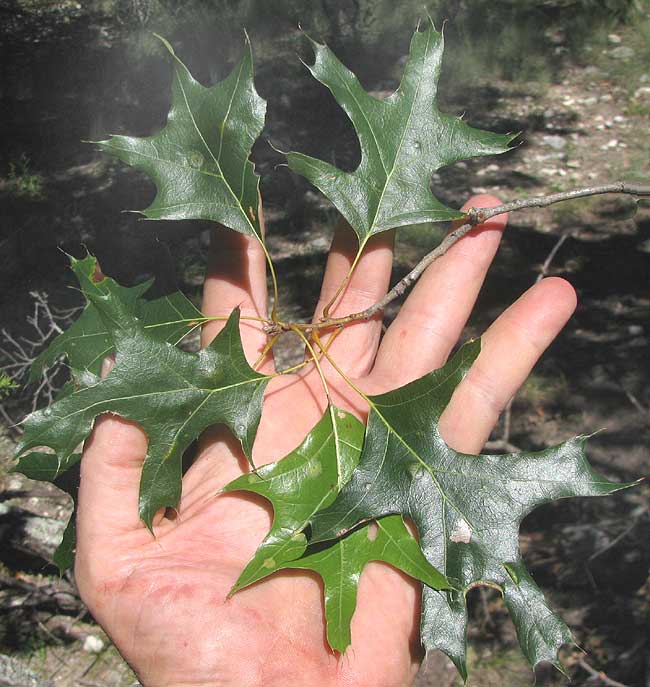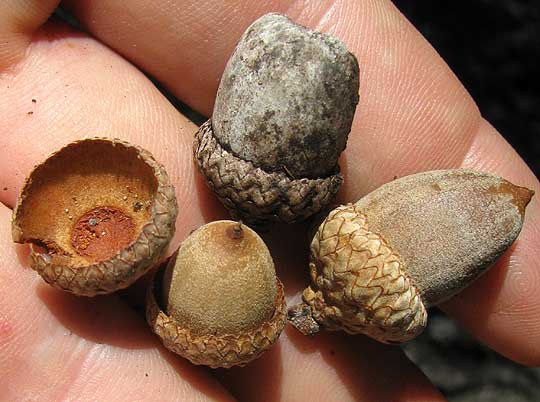Excerpts from Jim Conrad's
Naturalist Newsletter

from the the September 16, 2012 Newsletter issued from the valley of the Dry Frio River in northern Uvalde County, southwestern Texas, on the southern border of the Edwards Plateau; elevation ~1750m (~5750 ft); N29.62°, W99.86°; USA
TEXAS RED OAK
On the limestone hill in front of the house the vast majority of the trees are Ashe Junipers and Texas Live Oaks. The few trees not of these species really stand out, so it wasn't hard to notice when something completely new came along. It was an oak, similar to the Shumard Oaks farther east, in that its lustrous, bristle-tipped leaves were shiny and hairless below. However, its leaves were smaller, and Shumard Oaks aren't supposed to grow this far west. That's the mystery tree's leaves above. The tree's bark was deeply fissured and blackish, as shown below:

Beneath the tree it was hard to find acorns, probably reflecting the large number of animals who feed on them, but there were a few, looking a good bit like Shumard Oak acorns in that the nut was big and unusually broad at the top, as shown below:

In the online Flora of North America the tree keyed out to QUERCUS BUCKLEYI, commonly known as Texas Red Oak or Buckley's Oak, which is a species that science recognized only as late as 1985. Before then trees of the species had been thought of as merely part of the natural variation of the Shumard and Northern Red Oaks. Now that the species is known, it's described as occupying limestone ridges and slopes -- exactly like ours -- as well as creek bottoms and occasionally along larger streams from central Oklahoma south to here in southwestern Texas.
It's always a pleasure to meet a tree species new to me, to just stand and admire it and focus on how it's different from other species, and this week when I met my first Texas Red Oak, especially because it's endemic to such a small part of the country, the feeling was even greater.
from the March 31, 2013 Newsletter issued from the valley of the Dry Frio River in northern Uvalde County, southwestern Texas, on the southern border of the Edwards Plateau; elevation ~1750m (~5750 ft); N29.62°, W99.86°; USA
TEXAS RED OAK FLOWERING
Early this winter the trees' leaves turned to a dark red, then brown, and slowly over the winter most of the leaves fell off. Nowadays their branches are sprouting new stems, leaves and flowers, as shown below:

The dangling, pagodalike items are catkins of male flowers.